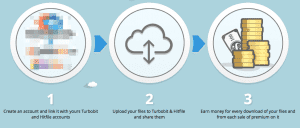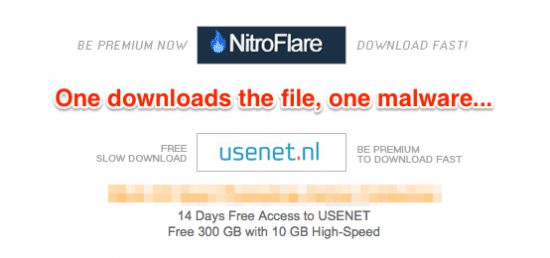The Revival of Paid Piracy
 In January 2012 New Zealand and U.S. authorities shuttered the cyberlocker site Megaupload and arrested the site’s founder, Kim Dotcom.
In January 2012 New Zealand and U.S. authorities shuttered the cyberlocker site Megaupload and arrested the site’s founder, Kim Dotcom.
In the aftermath of the high-profile closure, a panic was sent through the entire cyberlocker system. Several sites voluntarily shut their doors, others stopped 3rd party sharing and still others ended their affiliate programs, winding down a policy of paying for downloads.
But in the years since, Kim Dotcom’s extradition case has dragged on the cyberlocker scene has recovered at least some. Though cyberlockers may not have anywhere near the traffic they had during their pre-2012 heyday, at least one study showed that they are still very big business.
Where the dollars flow, so does the competition and in 2015 we’re seeing continued growth cyberlocker affiliate programs and with it a rise in paid-for piracy, spam and other unwelcome issues.
How File Sharing Affiliate Programs Work
 A cyberlocker, often called a file sharing or direct download site, is a place where users can upload content for others to download later. Though some have disabled 3rd party downloading, meaning you can’t download files uploaded by others, most make the file available to anyone with the link.
A cyberlocker, often called a file sharing or direct download site, is a place where users can upload content for others to download later. Though some have disabled 3rd party downloading, meaning you can’t download files uploaded by others, most make the file available to anyone with the link.
These sites generally make money through a combination of advertising and premium accounts. These accounts, which are charged on a recurring basis, give access to faster downloads, remove wait times and provide other benefits.
To help grow their audience, many cyberlockers have used affiliate programs that pay others for driving traffic to their site. This is most commonly done by rewarding uploaders of popular content. Sometimes these rewards are based upon the number of downloads a file has seen, other times it’s based on a percentage of revenue from new premium account signups.
However, after the fall of Megaupload, these affiliate programs came under fire. That’s because, to receive payments through these affiliate programs, uploaders have to drive a great deal of traffic. However, the files that get the most clicks are rarely legitimate and, usually, are copyright infringing.
According to the U.S. governments allegations against Megaupload, the site administrators knew that they were aware that some of their affiliates were uploading copyright infringing material and paid them anyway.
The result was that other cyberlockers with affiliate programs shuttered them shortly after Megaupload was closed and most of those haven’t been reopened since.
The Non-Death of Cyberlocker Affiliate Programs
After Megaupload was shuttered, one of the facts that was routinely cited in the criminal case against the site and Dotcom himself was that, through their affiliate program, they were knowingly paying individuals who had uploaded pirated goods.
Many cyberlockers quickly ditched their similar affiliate programs, hoping to avoid a similar fate. While a few smaller players did hang on, their programs were not as robust as those that were lost and were seen as poor replacements.
However, as distance has grown to the closure of Megauplaod, more and more sites have begun to step up and follow in its footsteps. Today, the cyberlocker affiliate market is starting to grow again. Beginning in late 2012 when several new players came into market, the number of cyberlockers getting back into the affiliate game has been slowly rising.
This has also been bolstered by a rise in affiliate programs of streaming sites, which offer the ability to stream uploaded media but not download it. The different legal standards for streaming sites means that, while they still face legal action, they are less likely to be hit with felony criminal charges. This has helped embolden many of the worst offenders to start up affiliate programs.
This is bad news for content creators of all stripes. Not only does this mean that more infringing links will be available for many works (including many that likely wouldn’t have seen much piracy otherwise) but it means there will be a significant effort to drive traffic to those links and away from legitimate sites.
The Spam and Malware Connection
The problem with cyberlocker and streaming site affiliate programs is, despite a lot of promises, they aren’t very lucrative most of the time. The amount they pay per visitor is typically very low compared to other, more legitimate affiliate schemes.
This means that, to earn any revenue from a cyberlocker affiliate program, the affiliate has to drive a very large volume of traffic. This likely means uploading a large number of popular files and getting a lot of people to download them or pay for the privilege to download them.
Fortunately for the affiliates, cyberlockers tend to be more tolerant of spam, copyright infringement and other acts that would get an affiliate booted from a legitimate program. This means many of the most common places you’ll see links to content on cyberlockers are spam blogs, spam comments and spam forum posts.
Uploaders also typically submit files to multiple sites, both to guard against copyright takedowns and as a means to participate in multiple affiliate programs. This complicates takedowns and worst of all, can push out legitimate sites in the search engines, making it harder for potential customers to find a link.
Of course, those who traffic in infringing content almost never limit themselves to just copyright infringement. They also partner with companies that distribute malware or unwanted software and to make even more money. Often times this takes the form of The Link Shell Game where the real download link will be hidden among spades of fake download links, most of which direct users to, popups, malware or other unwanted software.

While creators might celebrate that users will be driven to legitimate sites, away from the malware and popups, the continued dominance of these spam sites make it difficult for legitimate sites to rank well, especially for small content creators with limited resources and thus don’t have the ability to send millions of takedown notices or a large volume of sites to promote to replace the infringing links.
In short, while Google’s most recent anti-piracy effort have given fruit, for many those efforts could easily be washed away by a tidal wave of spam and cyberlocker links.
Bottom Line
The cyberlocker affiliate scene isn’t where it was in the highs of 2011. However, it’s also not where it was in lows of mid-2012.
Slowly, the scene has been rebuilding and that, unfortunately, is bad news of content creators all stripes, especially those who don’t have a large metal team to send out countless takedown notices.
It’s especially bad for those who create content that is trivial to share on cyberlocker sites. That typically means anything less than about 100MB in size. Though most file sharing site sallow much larger file sizes, BitTorrent is a more efficient way of sharing very large files both for the downloader, the uploader and the site hosting it.
As a result, if you’re a content creator that fits this description, with your next release be on the watch out for more cyberlocker piracy and the spam/malware that comes with it.
As for everyone else, cyberlocker affiliate programs don’t just make the web a worse place for creators, they make it worse for everyone online. More spam, more malware and more garbage.
Note: I deliberately avoided naming the affiliate services by name in the course of this article, I don’t wish to promote their services or deliver any traffic to them.
Want to Reuse or Republish this Content?
If you want to feature this article in your site, classroom or elsewhere, just let us know! We usually grant permission within 24 hours.
